There are two things that I've found important to measure in butterfly photography. First, how narrow an image can fill the frame? For the purposes of this page, I'll measure that with a unique measure: Compact Disc Count, or CDC. (1 CDC is about 0.4 inches, or about 1 centimeter.) Second, at what distance can you achieve that CDC? A low CDC count is great - it means you'd be able to fill an entire frame with a small skipper or blue. But it doesn't help if you need to get 2 cm away from the butterfly to achieve that level of coverage. The butterfly won't let you get that close! Even if it does, you're sure to interfere with the lighting on the butterfly, and your image will be very, very soft around the edges. What you want is a big image taken from far away.
If you own an SLR camera - digital SLR or analog - and take a lot of butterfly photos, you'll probably pick up a macro lens. These are designed to achieve just this effect. (A macro lens doesn't mean a lens that can focus close - it means a lens that can produce big images of small objects. There's a technical definition which is not of much interest here, and is downright confusing when it comes to digital cameras.) But if you've bought anything other than an SLR, you're stuck with the lens that came with the camera. That's where diopters come in to play.
Without a diopter:
With the Sony F-717, at full zoom you can focus from 90 cm to
infinity. At full wide angle, 2 cm to infinity. The former is the
problem: 90 cm really isn't that close, and doesn't give you a very big
image. (All distances are measured from the front of the lens.) At
full zoom, I measured a CDC of 14:
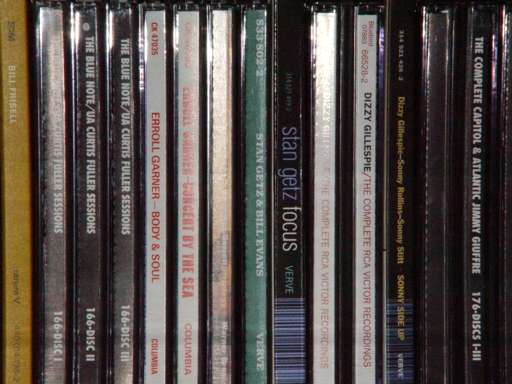
What diopters do
A diopter adds some magnification to your image. If you can focus from the same distance with the same zoom with and without the diopter, it seems the image is a bit bigger with the diopter. (At one such setting on the F-717, a +5 diopter adds about 20% of magnification.) This is very nice, but is not the really big win.
The big win is that a diopter changes the focus range of your lens. Diopters come in powers from +1 to +5 (that I've seen). They're also stackable: you can put a +4 diopter on top of another +4 diopter, and conveniently that gives you the effect of a +8 diopter. (Quality does suffer when you stack.) The higher the number, the more powerful the diopter. The more powerful the diopter, the closer you can focus. Specifically: divide 100 centimeters by the diopter power. That's the maximum focus distance of the diopter. A +5 diopter focuses at 20 centimeters or less. A +2 diopter focuses at 50 centimeters or less.
This is only a rough formula, and the actual results vary depending on your lens and how far you've zoomed in or out. At full zoom, the F-717 with a +5 diopter can focus from 7.5 inches (19 cm) down to 6 inches (15.25 cm); at full wide angle, from 8.5 inches (21.6 cm) down to less than 0.5 inches (1 centimeter). The first thing to note is that you can no longer focus at infinity. In fact, if you're more than 8.5 inches away from the butterfly, you've got no way to get an in focus photograph! That's really not as bad as it sounds, though: the front of the lens is 7 inches from the back of the camera, so you just have to get the camera to within 15.5 inches. And I can hold the camera 20 inches away from my body without too much trouble, so I've got to get my torso within about three feet of the butterfly. That's not too difficult.
With a +5 diopter:
What do those numbers mean in terms of coverage? With the diopter
attached, at wide angle and as far from the butterfly as possible to
keep it in focus, I've still got a fairly wide coverage, 16 CDC:
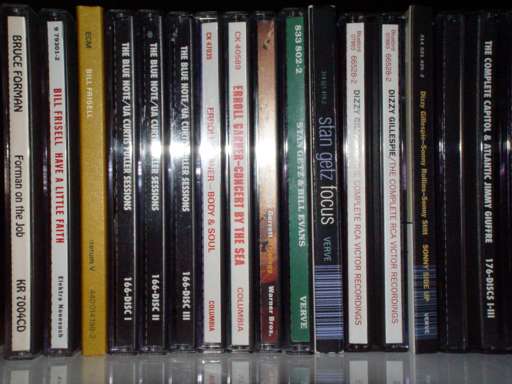
But just one inch closer (7.5 inches), and fully zoomed in, I've
got a minute CDC of only 3.5:
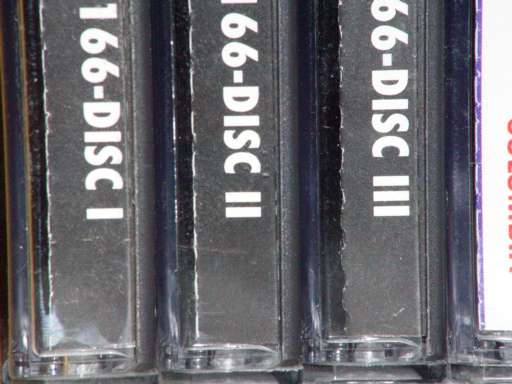
Move down to 6 inches, and it's possible to get down to a CDC of only 3!
Now let's take away the diopter: what do I need to do to get back to
this coverage? I've got to zoom way back to about half zoom to be in
focus at this distance (7.5 inches), but my coverage is now down to
about 8.5 CDC:
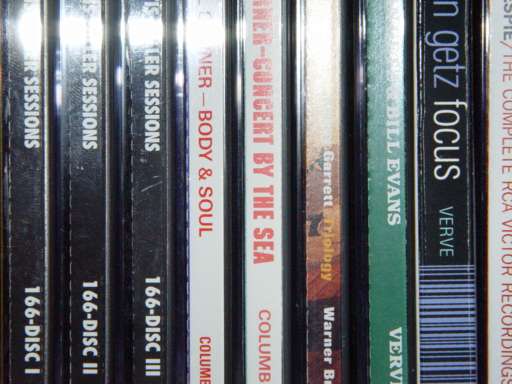
To get down to 3.5 CDC, I need to zoom all the way out and move
up to about 2 centimeters away:
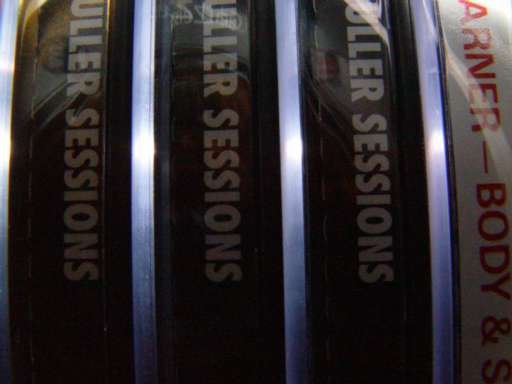
The image is fisheyed and out of focus at the corners. A lousy picture!
Summing up:
With a +5 diopter, if you can get the camera to within 8 inches, you can get twice the coverage that you could without the diopter. The coverage is every bit as good as it would be if you could actually get the camera to within an inch of the butterfly, but the quality is much, much higher. Once again: a diopter doesn't mean that the zoom lens on my camera can fundamentally get a larger picture of a butterfly. It does mean that I can get that same large picture from much farther away. And that's a huge advantage.
There's a less quantitative advantage as well. Before using a diopter, I'd find that I'd start out zoomed all the way in as I approached a butterfly. When I got too close to focus zoomed in, I'd zoom back out a bit, then keep approaching. Then I'd repeat this process. But this had a "two steps forward, one step back" feel to it. I spent a long time getting close to the butterfly without greatly improving the quality of the picture. With the +5 diopter, there's no two ways about it: get to 8 inches away, and I can get get a great picture without any reason to get closer. Any further away, and I've got nothing. This means fewer mediocre pictures, but more great pictures.
One thing you do give up with diopters is depth of field. I haven't yet done the experiment to show this, but you've got a lot less depth of field with a diopter, so it'll be harder to keep the full image in focus. You can just live with this. Or you can actively counteract the effect by using a small aperture (which you'll remember is a large F-stop number). I'll move up to F8.0 when I'm using the diopter. But that means I'm losing a lot of light, which forces me to use the flash. If you don't like the look of photos taken with a flash, this might be a problem. Personally, I like the look.
With a +2 diopter:
As I wrote above, the diopter power implies the focus distance. Take 100 cm and divide by the diopter. That's the focus distance with the diopter. So, a +5 diopter wants to focus within 20 cm. A +2 diopter wants to focus within 50 cm. So, higher power diopter implies more magnification - if you can get that close.
Now, some numbers. With the Canon 500D - a +2 diopter - the F-717 at maximum zoom can focus as close as 31.1 cm to as far as 50.2 cm. That leads to a field of coverage ranging from 5.5 CDC to 8.8 CDC. (Zoom out and you can get much, much greater fields of coverage.) From 19cm - where I could get 3.5 CDC with the +5 diopter - I have to zoom back to around half zoom, where I can get 6 CDC.
A few things stand out when comparing this to the +5 diopter. First, while I can't focus in quite as tight, the range of focus is much larger with the +2 - a full 19 cm instead of less than 4 cm. Second, the smallest subject that can fill the frame is a good bit larger.
The larger focus range means that autofocus is a lot more useful (and manual focus less so) with the +2 diopter. With the +5, I spend enough time moving the camera to get near the focus range that it's just easier to keep moving it to get the subject precisely in focus (rather than using autofocus). Also, if you can only get to within 50 cm, but you're using a +5 diopter, you get absolutely nothing. The camera can't focus that far away at all. If you'd had a +2 diopter, you'd have gotten your photos from 50 cm away, and you could keep shooting at full zoom all the way up to 31 cm. (Get any closer than that, and you'll need to start zooming back out in order to focus.)
The difference in frame coverage may not sound that significant - and for large butterflies it isn't. 5.5 CDC is a little over 2 inches across, so any medium or large butterfly will easily fill the frame. For smaller butterflies, though, 3 CDC versus 5.5 CDC is a big difference! If you take a 5.5 CDC image and crop it down to 3 CDC, you've lost 70% of your pixels. (1 / (1.8 * 1.8) == 0.308, if you want to see the math). Paid the big bucks for a five megapixel camera? Lose 70% of your pixels and you haven't even got a two megapixel camera left.
This is the diopter trade-off with a high power diopter: you either get a brilliant photo or you get nothing. The lower the power diopter, the fewer amazing, frame-filling photos you'll get - especially for little guys, like blues and skippers - but it's a lot easier to get decent shots.
Depth of field
As I wrote earlier, closeup work is brutal on depth of field. For extreme closeups you may have a mere few millimeters of depth in focus. I've seen it written that diopters - and higher power diopters in particular - reduce the depth of field. This is not really true. Or, at the very least, the diopter isn't to blame. Macro work always has bad depth of field. Depth of field isn't determined by the lenses or filters you use. It's determined by the f-stop and the image size, and those alone. (For a more technical discussion of when this rule is true and when it isn't, see below.)
For example, take the +2 diopter zoomed all the way in from 31.1 cm away, which I mentioned gave you 5.5 CDC. Now, take the same shot using the +5 diopter from 19 cm away, but zoomed out quite a bit so you're still getting 5.5 CDC. You might expect you'd have less depth of field - you're much, much closer to the subject. In fact, the depth of field is exactly the same! Even so, the pictures are different. Because you're working so much closer, you'll have a different angle on everything in the background of the picture. Your flash will behave differently since it's so much closer. And, of course, you're a lot more likely to have scared off the butterfly!
Something worth keeping in mind: because a larger image size means less depth of field, it's also true that a smaller image size means more depth of field. And with diopters, you can get a smaller image size just by zooming out, without moving the camera or refocusing. So if you're having trouble focusing on a butterfly, just zoom out a little. Frame-filling pictures aren't worth much when they're blurred.
What brand and model diopter to get
Diopters are not all created equally. Stay away from single-element diopters - even if advertised as "multi-coated", they will hurt your image quality. (You've just spent hundreds on a digital camera - don't try to save $50 on the filter!) Stick to two-element diopters. Hoya makes high quality +3, +4, and +5 two-element diopters, which can be ordered from The Filter Connection. You can also try the somewhat less expensive, but still good quality Canon 500D and the 250D. The 500D is a +2 diopter, the 250D is a +4 diopter. (The Canon 500 is an inexpensive single-element diopter. Don't bother.) There's likely other good brands; these are the two I've tried.
Links
- What is a close-up filter?
- Depth of Field When Image Size is Constant : a fairly technical article about depth of field.